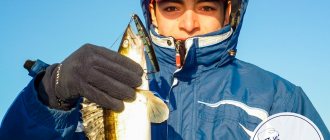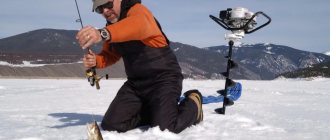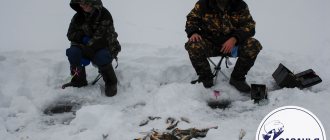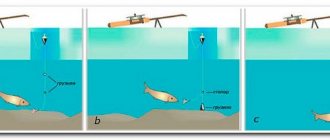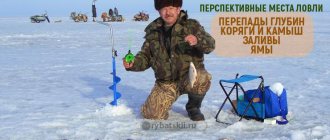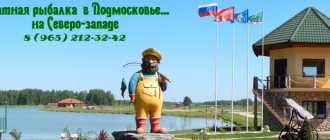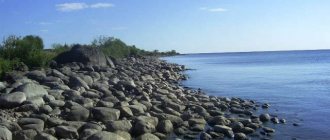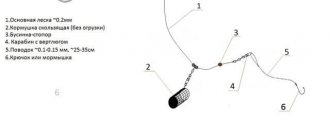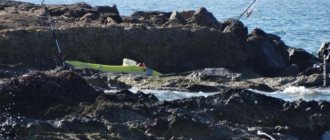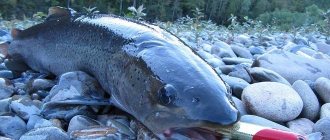Jig fishing offers a wide range of opportunities for all anglers. Jig fishing for pike perch is done at the very bottom of the reservoir; in this way, in a successful situation, a fisherman can catch a deep-sea predatory fish, which is pike perch.
Equipment played a major role in the popularization of this method, as it greatly facilitated the process of catching a predator. The bottom lifestyle of the predator is not an obstacle to jigging, and even beginners can go fishing for pike perch.
Jig fishing for pike perch
Hunting for a predator begins with understanding the characteristics of the fish. Pike perch is a deep-sea fish, calm and calculating. You can spot pike perch in bodies of water with strong bottom changes and in areas with a fast, clean counter current.
The following techniques are best for jigging walleye:
- Wiring. This technique offers a stepwise approach to extraction. At first, the bait is lowered to the bottom and the pike perch is allowed to notice its prey; later, when the fish is already interested, the equipment is raised with sharp jerks, luring the fish closer to the surface. When the fisherman completes two turns of the reel, it is necessary to pause so that the bait sinks to the bottom again.
- Wiring for demolition. Since pike perch is a fish that prefers strong currents, the bait should be in the habitat of the predator. Wiring for demolition is carried out by the current. It is important to lower the bait to the bottom and wait for the current to pick it up, thereby achieving constant movement of the equipment.
- Moving the bait closer to the bottom of the reservoir. From time to time it is necessary to throw it with the tip of a spinning rod. During such wiring, it is important not to forget about pauses, since constant chaotic movement will not attract the fish, but will scare it away. The bait should simulate the behavior of the fry as accurately as possible.
- Slow wiring. This technique involves carefully moving the bait along the bottom of the reservoir. For this technique, it will be more effective to choose a medium bait, since the heavy one will always fall to the bottom and cling to the recesses.
As you can see, all fishing techniques are deep-sea. For deep sea fishing, it is extremely important to choose the right tackle, bait and reel. The further success of fishing depends on the choice of these components.
A bait that is too heavy and large can be the main reason for unsuccessful fishing, since its large size will not allow the fisherman to maneuver and will constantly cling to the bottom of the reservoir.
The following characteristics are desirable for equipping a fishing rod if you want to catch pike perch with a jig:
- Tackle. For tackle, it is better to select a rod measuring at least two meters. The maximum length should not exceed three and a half meters.
- Coil. The quality of the reel also changes the responsiveness of the fishing rod. For night fishing, it is extremely important to choose a very sensitive reel, which will already begin to rise with one movement. The most relevant sizes are 2500-3000 for jig fishing for pike perch. It would be appropriate to purchase a multiplier along with a reel for night fishing.
- Fishing line. Of all types of fishing lines, it is worth choosing a braided one, since it does not twist during the fishing process and does not wrap itself in knots. With such a fishing line, hooking is extremely effective, because it allows you to completely control the fishing process due to the lack of stretch on the cord. This line is also very strong, which is suitable for fish such as pike perch. The predator has a hard mouth and when caught, it is important to lead it jerkily towards the shore.
- Equipment. Of the jig rigs, the best ones are those that quickly cut through the mouth of a predator. These are rigs with a hook soldered inside.
Catching pike perch with a jig: bait
The main parameters by which baits are selected:
- Shape and size;
- Color;
- Material;
- Smell.
Each of these parameters is important for the fisherman and the characteristics of the chosen technique. For example, for step retrieving, a light and bright bait is suitable, since the technique is based on sharp jerks of the bait. It is not only the color that attracts attention, but also the smell.
However, the bait will always be at the bottom of the reservoir, and thus the smell, on the contrary, will throw the predator off the scent, as it will spread throughout the entire reservoir, which is undesirable for the fisherman.
Main types of jig baits:
- Vibrotail and twister are the most popular baits among fishermen. These silicone products are in demand due to their simplicity and durability. However, for hunting predatory fish, it is important to purchase several vibrating tails, since the sharp mouths of pike perch quickly tear apart soft bait. As for the smell and color, this is at the discretion of the fisherman himself. Yes, you can add a scent to the bait, but the success of fishing depends more on technique than on the bait itself.
- Foam fish. Such bait will allow the fisherman to avoid biting small fish and focus more on large prey, since large and predatory fish primarily react to foam bait.
- Edible silicone. Silicone has appeared on the fishing market quite recently. Such bait will not arouse suspicion among the fish, as it imitates real prey for pike perch. The attractant will add flavor to the bait, and thereby increase the likelihood of a catch.
The choice of jig head should be approached thoroughly, since a wide variety of baits have a huge number of parameters, each of which affects the fishing result:
- Bait shape. When fishing for pike perch, anglers most often choose a ball , since such heads are universal and suitable for all fish.
- “Fish head” is an imitation of the shape of a fish, the hook is located above and below the sinker. The aerodynamics of such baits are impressive. They cling less to the bottom during wiring.
- For depths of 2 meters and less, it is worth using sinkers weighing from 4 to 8 grams.
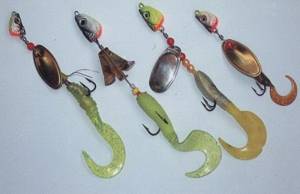
Based on the expected depth of the lake, it is better to take several types of bait for more successful maneuvering at the bottom of the reservoir.
Jig fishing uses more than just sinkers and jig heads. An important addition to walleye fishing is the equipment.
Stores can offer the following types of equipment:
- Double hook. Or as it is also called - “Cheburashka” - a head with loops. The bait is mobile thanks to the hinged ring and strong, which allows you to successfully catch predators with it. The peculiarity of the bait is that it is not applicable for fishing with live bait, only with artificial products.
- Retractable leashes. They are more applicable in difficult places and require a certain skill from the fisherman. The length of the leash should be up to 120 centimeters, and it should not be freely floating above the bait. The idea of this rig is to control the sinker on the main line. In this case, the jig touches the bottom, and the twister or vibrotail is in the water above the jig itself. The free movement of the bait allows you to lure a predator, but at the same time, the leash gives the fisherman more control over the bait.
The following features of pike perch should be taken into account when choosing a fishing spot:
- Pike perch loves clean and fast currents.
- The depth of the reservoir should be approximately two to three meters, but there should also be peaks 5 meters deep in the reservoir, since pike perch prefers a heterogeneous bottom for habitat.
- The bottom must be hard , preferably earth or clay. Muddy and overgrown banks are not suitable for fishing.
More likely walleye habitats include:
- Great depth near the shore, places near washed out and concave banks with fast currents.
- Places with large depth differences. Holes at the bottom of a reservoir can be identified both with the help of an echolocator and by the breakers on the water.
- River islands , shaped like a spit, which go under the water into a deep hole. The current near such islands is strong, and the shallows continue into a hole.
Catching pike perch from a boat greatly expands the fisherman’s capabilities, as it allows him to move around the lake and look for a spawning site for predatory fish.
If a fisherman decides to fish from a boat, then the following points should be observed:
- Echo sounder. This device will allow fishermen to accurately and quickly find out the bottom of the reservoir without any interference in the life of the reservoir. Therefore, fishermen will not spook the fish even before they start catching it. An echo sounder is needed primarily in order to find out a place with a large difference in bottom level. These are the places that pike perch choose to live.
- For fishing from a boat, a rod shorter than three meters is suitable , but it should not be less than two and a half. Such a rod will help to carry out high-quality wiring with high amplitude jumps. Also, if the bait gets stuck among the stones, a long rod will help to quickly release the stuck hook.
- The line should always be taut . This will increase the sensitivity of the wiring. Immediately after the bait hits the water, you must close the bow. In this way, you can achieve an arched fishing line, which will immediately show if the pike perch bites the bait. This will be visible at the tip of the spinning rod.
- When fishing with a jig, it is important to make sure that the bait touches the bottom . This will increase the likelihood of a predator biting you. Pike perch feeds mainly on the bottom and you should not raise the jig higher than 10-15 centimeters from the ground.
Speaking about the river, it is worth noting that when fishing for pike perch, it is better to move upstream and look for promising places for catching. This technique involves the fisherman constantly walking along the shore.
For summer fishing from the shore, it is best to use stepped fishing and determine the best place for fishing. This also helps the angler get a rough idea of the bottom of the pond.
Summer fishing during the daytime will be unsuccessful for the fisherman. This happens because in hot weather the predator becomes lethargic, or even hides in holes and does not go out hunting until dusk.
In the summer, it is better to catch pike perch:
- During twilight , when the sun has already disappeared below the horizon.
- During hours of special predator activity - approximately 2-4 am. At this time in the summer, the pike perch begins to hunt.
- During dawn , when the sun has not yet fully risen and there is no heat.
- In cloudy or cloudy weather.
Fishing on kama in summer from a boat
Fishermen in the upper reaches of the Kama begin fishing for pike perch in open water somewhere in June, and this fishing period lasts until October, and in some cases until December. In most cases, fishing at this time is carried out using trolling.
But it should be noted that when fishing for pike perch on the Kama in this way, you will need an echo sounder so that the fisherman can determine the features of the bottom topography of the Kama, the depth of the river, in addition, this technical device all helps to determine the places where pike perch congregate on the Kama.
Already closer to the second half of the autumn period, fishermen on the Kama successfully catch trophy pike perch. Fishing for pike perch on the Kama shows good results at its mouth.
In winter, pike perch fishing on the Kama is carried out, in most cases, using a variety of pike perch spoons and balancers, jigs. In addition, fishermen often bet on pike perch on the Kama River.
In the spring, somewhere from the middle of the month of April to the end of the month of May, fishing for pike perch on the Kama is distinguished by the opportunity to catch very large individuals of this fish. It is worth noting the fact that on the Kama, spearfishing enthusiasts catch pike perch almost all year round.
What do you use to catch carp on a rock? Kama carp
- A.s. Pushkin wrote a fairy tale about a fisherman and a fish
- Aqua boats in Magnitogorsk
- Transported cargo on a boat trailer
- Bait table stonfo
But how to catch carp without using bait, you ask? The principle of fishing with such a device is designed specifically for carp, which, due to its natural habits, sucks on a large piece of food with its fleshy lips.
At this time, the hook, along with particles of soaked cake, enters the fish’s mouth. Naturally, the carp will try to spit it out, but getting rid of a bare hook in its mouth is almost impossible.
This is how self-cutting occurs. The carp bites on cake mainly from the second half of summer until the start of cold weather.
Most often, this method is used for night fishing. The lower reaches of the Amur River are considered a cult place for fishing for carp.
Why this particular river?
Catching carp in winter on the kama
The Amur has long been famous for its fish wealth, and wild carp lived there in incredible numbers. Fishing on the Amur for carp is also popular because it is here that you can catch a real trophy weighing up to 20 kg.
These places even host a fishing festival to catch it. Thousands of fishermen from all over the country come here every year to fish for wild carp.
Less commonly, carp enter narrow, remote parts of reservoirs, bays and backwaters, especially if the bottom is muddy. It should be borne in mind that it looks for areas with warmer water and loves the surf shore if the wind is western or southern.
The wind blows out small particles of food, the surface current carries them along the shore, and the wind also enriches the water with oxygen, which increases fish appetite, especially in summer. Catching carp from a boat In deep and fast areas, it is most comfortable to fish from a boat.
Usually it is installed on two anchors, one thrown from the bow, the other from the stern. When fishing from a boat, the feeder is secured near the stern or bow, usually placing the bait in gauze or mesh, through which the feed is slowly washed away.
You can also lower two feeders if there are two fishermen in the boat. The donka used in this case is quite simple.
It is installed on a spinning rod with a test of up to g or on a carp rod of a similar load. Many people use old-fashioned metal spinning rods to catch carp from a boat, which are very strong and make it easy to control hooked fish.
Its brake is sufficient to withstand the strongest currents when using thick monofilament.
For centuries, the Kama has been and remains, to this day, a great fishing river. Once upon a time, many tribes fed on the waters of the Kama, which abounded in numerous fish.
And although times have long changed and the waters of modern rivers are not as rich in fish as they once were, the Kama still attracts many fishermen today. And there are still a lot of fish there.
And if in the lower reaches of the Kama and its middle reaches there are fewer fish, then the upper reaches of the Kama are distinguished by fish abundance and diversity of species, and there it is quite possible to experiment with a variety of tackles and rigs.
Catching carp: How to catch carp with cake, with boilies and what gear is best for catching carp in the fall
Most of the fishermen who prefer to catch pike perch on the Kama use spinning rods to catch them. In addition, today this method of catching pike perch on the Kama is universal and the most cost-effective. They catch pike perch on the Kama with spinning rods, both from the shoreline and from boats.
For beginners, catching pike perch on the Kama using the jig method is more suitable. At the same time, fishermen use equipment such as Carolina or Texas, which bring success even to beginners in pike perch fishing.
The method of trolling for pike perch on the Kama River is also very popular; submersible wobblers are used, and fishing in the water column is very successful with this method.
In those parts of the Kama, with depths of three meters, in a calm current, fishermen are very successful in catching pike perch from boats using onboard fishing rods. In most cases, anglers use natural baits to catch pike perch on the Kama River, because pike perch is a predatory fish.
It is worth noting that fishermen on the Kama do not use girders so often, although this bottom tackle shows very good results in catching pike perch. .
Winter fishing for pike perch: Secrets of catching pike perch in winter
To make winter fishing for pike perch a success, you need to know some of the behavioral features of this predatory fish. When going winter fishing for pike perch, remember that pike perch prefer a hard sandy or gravel bottom.
Especially when it comes to winter fishing for pike perch. However, we should not forget that the location of river, lake or reservoir pike perch will have its differences.
I had to catch pike perch in winter in such reservoirs as Mozhaiskoye, Ruzskoye, Ozerninskoye, Rybinskoye and a number of others.
To make winter fishing for pike perch a success, you need to know some of the behavioral features of this predatory fish.
The Kama is the most important water artery of the western Urals. From ancient times until today, the river has been famous for its amazing fishing.
Significant depths, shallows, riffles with a jet current, which seduce many species of fish, cannot but attract beginners and experienced fishing masters. There is an opinion that fishing here is unearthly bliss.
Fishing brings a decent catch, but only for those who are rightfully considered professionals in the fishing business. And for this it is desirable to have some experience, knowledge of the basics of fish behavior and skills in basic fishing methods.
About 50 species of fish live in Kama, most of which are commercial.
Where to look for pike perch on the Kama River
Of course, before you start fishing for pike perch on the Kama River, you should know the most promising locations for pike perch on it. In this case, the preferences of the pike perch themselves should be taken into account, for example, the fact that the pike perch most of all prefers sections of the river that are more warmed up by the sun's rays, with clean water.
In addition, pike perch is caught well in those parts of the river where the bottom surfaces are the most difficult. In extreme heat, you should look for pike perch in the areas where streams and riffles are located on the river.
Source: https://ribaulov.ru/shimano/rybalka-kame-letom-lodki/
Catching pike perch with a jig on a reservoir
To fish on the reservoir, a fisherman will need:
- Echolocator for determining the bottom level. Without an echolocator, it would be better to choose a place near the edge, since this is where predators are most often observed.
- A boat for constant movement , since hooking will occur during stepwise wiring. In addition, fishing near the shore in the reservoir is difficult, since most artificial reservoirs are shallow.
It is better to catch pike perch at night during summer and early autumn, since it is at this time that the predator becomes active after sunset.
For night fishing you should stock up on the following:
- Wobbler , this bait is most effective at night, namely during the hunt of pike perch. This time begins at 12, and the main activity lasts from two to four in the morning.
- The jig will be most useful after sunset and before dawn.
- Spinning with high sensitivity. The fishing rod must have braided line.
- Repellents in large quantities, since mosquitoes at this time of day over water bodies will not allow you to quietly wait for prey.
- Flashlight , with which you can highlight the bottom and not let the bait out of sight. The light will attract the predator faster.
The Kama River is distinguished by its diverse bottom.
The following are worth considering when fishing for pike perch in the Kama:
- At great river depths of 12-13 meters, you should not look for prey.
- Pike perch is found at a depth of 7-8 meters , which may seem unusual. However, this is a feature of this place and all fishermen who want to fish on the Kama are recommended to look for a promising fishing spot before starting fishing by dragging a fishing rod along the bottom.
Winter fishing for pike perch: Secrets of catching pike perch in winter
To make winter fishing for pike perch a success, you need to know some of the behavioral features of this predatory fish. When going winter fishing for pike perch, remember that pike perch prefer a hard sandy or gravel bottom.
Especially when it comes to winter fishing for pike perch. However, we should not forget that the location of river, lake or reservoir pike perch will have its differences.
I had to catch pike perch in winter in such reservoirs as Mozhaiskoye, Ruzskoye, Ozerninskoye, Rybinskoye and a number of others.
To make winter fishing for pike perch a success, you need to know some of the behavioral features of this predatory fish.
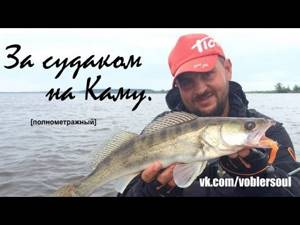
The Kama is the most important water artery of the western Urals. From ancient times until today, the river has been famous for its amazing fishing.
Significant depths, shallows, riffles with a jet current, which seduce many species of fish, cannot but attract beginners and experienced fishing masters. There is an opinion that fishing here is unearthly bliss.
Fishing brings a decent catch, but only for those who are rightfully considered professionals in the fishing business. And for this it is desirable to have some experience, knowledge of the basics of fish behavior and skills in basic fishing methods.
About 50 species of fish live in Kama, most of which are commercial.
Fishing on the rifts
Catching pike perch with a jig: Volga
The Volga is famous for its fast current, so it is extremely important to consider the following before fishing:
- A fishing rod must be selected with a test weight from 20 to 150 grams.
- The length of the fishing rod should be three and a half meters with an error of 200-300 meters.
- The cord must be purchased up to 150 meters. The extra space on the spool is taken up by backing.
- The power of the handle should not be less than 2.5 kilograms , and it is advisable to take an even more powerful handle.
- Braided lines have less float and are an ideal choice for fast and powerful currents.
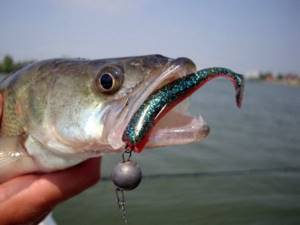
Catching pike perch with a jig: Oka
The relief on the Oka is diverse and the fanged predator often changes its habitat. The most successful fishing spots are the edges 10-20 meters from the shore. The pike perch here reaches a weight of one and a half kilograms, but nothing more.
During the rainy season, pike perch does not respond to bait, and it is better to wait for clear weather for fishing on the Oka.
The main secret to catching pike perch with a jig is properly selected gear.
The following characteristics are important for large catches:
- High sensitivity of the gear , which can be achieved with a tight line and a properly selected fishing rod.
- Tough and confident hooking of a predator while biting the bait.
- The rod should not be heavy , despite its length, it should be light. To do this, it is important to choose a fishing rod made of high-quality and lightweight material. In this case, the rod must have a solid base.
- Using an echo sounder to track a predator . This is applicable for large fish that still do not want to show themselves. In order to be sure of its location, you can use an echo sounder.
Catching large pike perch with a jig
If a fisherman has found a deep-sea place with a varied bottom, but there is still no catch, this does not mean that big fish cannot be found here. Small fish do not want to be next to a large specimen and therefore large fish are usually found alone.
Catching large fish is extremely difficult, and it is worth visiting the same place several times over and over again until the fish come out to hunt. Large fish hunt extremely rarely, usually once a week. Consequently, the hunt will be rather wait-and-see; attack tactics will not work here.
Most often, large pike perch are found in holes with flooded snags. The best time for fishing is lunch, as during this period the pike perch rises to the exit of the hole and is easier to attract with bait.
The following actions will lead the fisherman to a large pike perch:
- Find a hole with snags and an uneven bottom.
- Determine the entrance and exit from the hole, since from here it will be easiest to catch pike perch during its hunt.
- Find submerged roots. This is where you will need to throw bait to attract a predator.
- Visit this place for a week. First, watch the exit from the pit and periodically move the bait at the entrance. Small snags near the hole can also become habitat for large pike perch.
Catching pike perch with a jig in summer
Despite the fact that in summer pike perch are generally less active on bait, they behave differently in each month:
- June. The pike perch are just beginning to fatten up and thus there is a chance of catching a good catch, but the fish will not be as heavy in size as if caught in July or August. At this time, it is better to look for fish in the shallows at the beginning of the month, and move on to deeper sea fishing towards the end of June.
- July. It’s not a good month for fishing for pike perch, since the fish have already fattened up and are not actively hunting, therefore, they no longer respond to bait.
- In August, the fattening period begins again for the winter. With the right technique, the catch will be successful in August. Both in terms of size and the number of fish in reservoirs, this is the best month for catching pike perch on jigs.
Autumn fishing
Starting in August, the fish are actively fattening up for the winter, and therefore it is extremely important to fish in the fall. For autumn fishing, it is better to choose fishing from a boat and use jig fishing.
It is better to choose a deep-sea location; in the fall, the pike perch will gradually move to its wintering place.
Features of fishing on the Kama
In the western part of our country flows the Kama River, which is navigable along almost its entire length. Every year, thousands of tourists enjoy the picturesque views from the boards of motor ships cutting through the water surface. And there are legends about fishing on the Kama.
Beauty from the Ural Mountains
In the center of the Verkhnekamsk Upland, at the foot of the Ural Mountains, springs gush out, giving rise to the great river. But in the area of the source, the Kama makes no impression at all: here it is such a small stream that you can stand on both banks at the same time.
This river has many more kilometers to run before it becomes a mighty water stream, which is difficult for most European rivers to compete with. During its journey, it collects numerous tributaries - some quiet and smooth, others noisy and swift.
The Kama is considered a tributary of the Volga, which, by the way, competes with its full flow, but after the construction of hydraulic structures it flows directly into the Kuibyshev Reservoir.
Dams built by humans certainly have a significant impact on the life of underwater inhabitants. Huge numbers of fish sometimes gather near the obstacles blocking the blue road.
The river attracts the fisherman with trophies
There is a lot of fish not only where artificial structures have been created; local fishermen can identify many promising places for fishing. The nature of the bottom is of great importance: here great depths give way to riffles, and various representatives of the river’s fish population feel just fine in such conditions, growing to serious sizes.
Throughout the winter, there is strong ice on the Kama, and fishing continues.
The only break comes in the spring: like everywhere else in the country, there are restrictions on spawning time. So, when nature has not yet woken up from its winter sleep, it is too early to catch: females must give birth to a new life, spawn.
Contemporary issues
Lately there have been fewer fish in the great Russian river, and poachers are being blamed for this. Of course, they made their contribution, and a considerable one. But the real disaster is the baiting of fish by enterprises that dump waste into the water.
Fishermen are always the first to sound the alarm in such cases and draw attention to the problems of the waterway, which was once teeming with fish.
Largely thanks to their efforts, the situation is gradually beginning to change for the better; modern cleaning equipment is being installed at plants and factories along the Kama and its tributaries.
Sometimes the inhabitants of the underwater world die and not because of human activity: a fish accustomed to cold water comes from a fast-moving mountain tributary river into the middle current. And it’s hot for weeks, which means the content of oxygen dissolved in the water drops, which is why some species cannot withstand this.
But even despite such difficult conditions, fish still splash in the waters of the Kama in huge quantities.
Fishing paradise: you can’t leave without a catch
Fishermen use a variety of gear: they use a donk and a rubber band, a regular float rod and a spinning rod; many different baits, both of animal and plant origin, are also used to seduce prey. Who are Kama fishermen hunting?
Each section of the river has several features. There are so-called pike places: numerous video and photo reports indicate that you can catch quite decent specimens there; in winter it is most convenient to use girders; in summer you can choose the usual equipment for a predator.
Sometimes you manage to catch simply stunning specimens, weighing up to 100 kg! This is not an exaggeration: everywhere, in “catfish” places, you can see the fight of meter-long mustachioed giants. Of course, catching him is not at all as easy as it seems at first glance.
There are catchable areas where ten-kilogram carp are caught, and large burbot are also found.
Perches and chubs, the larger ones, stand where they are deeper and where there are more snags; the smaller ones are excellently caught on the rifts.
